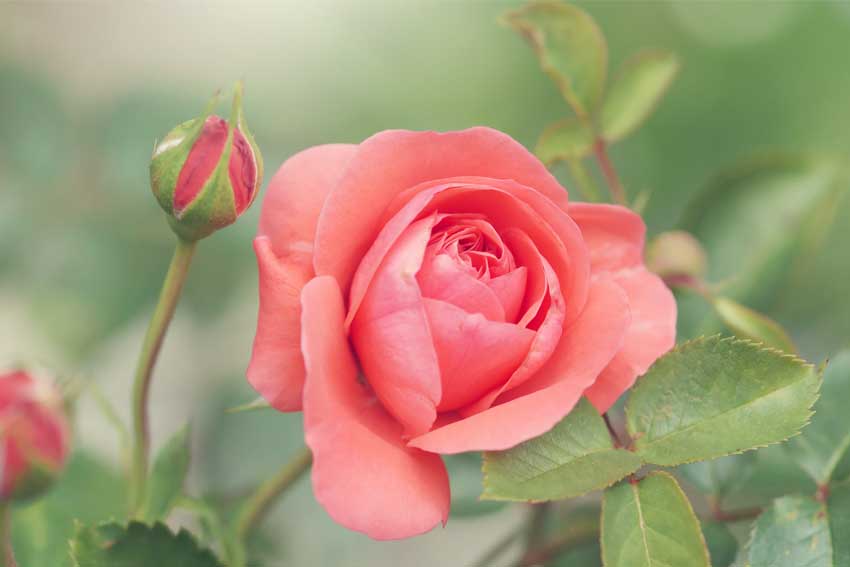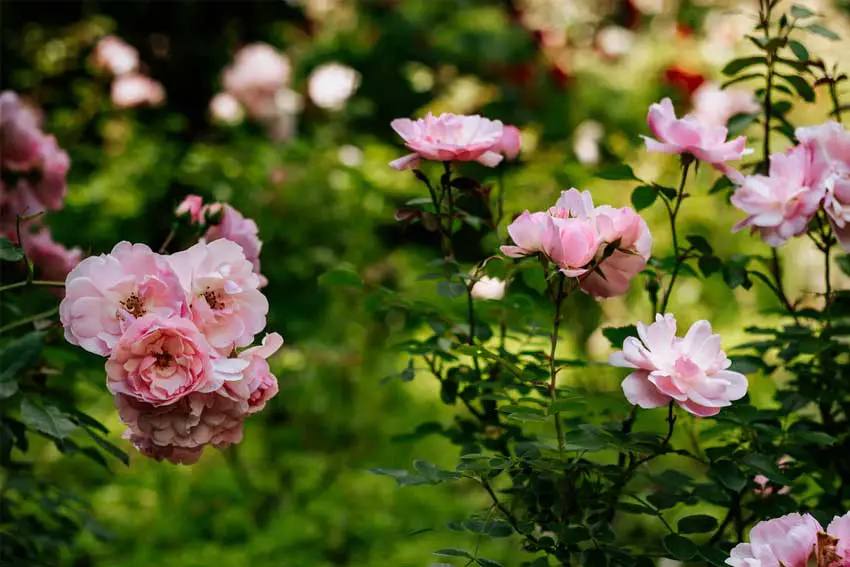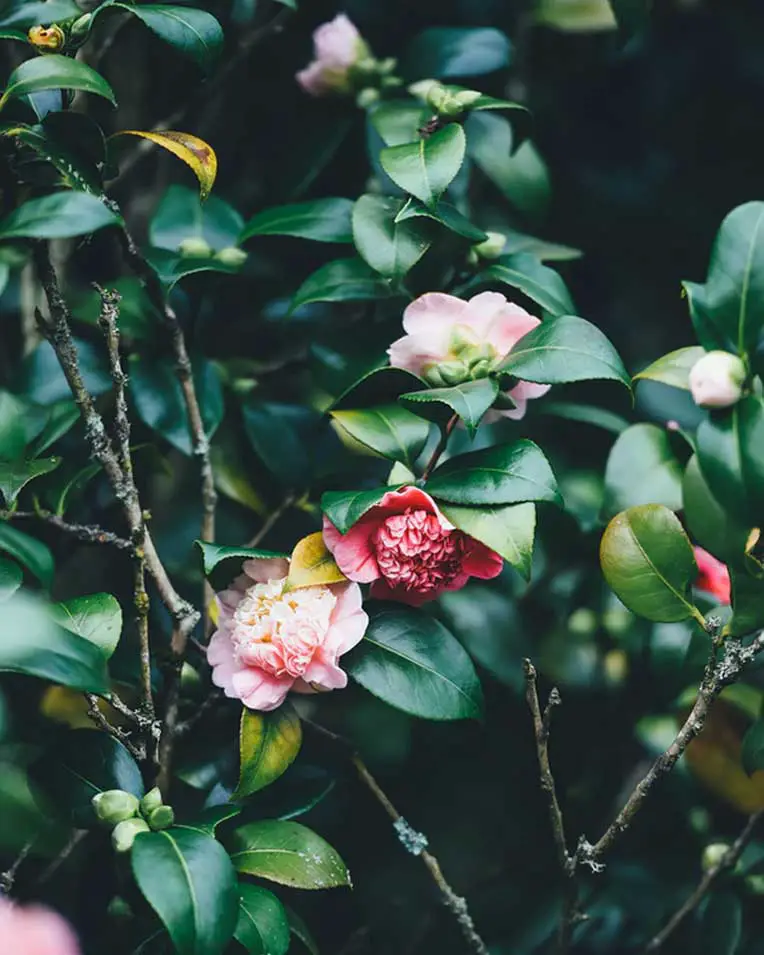How attractive may your rose tree seem if it adorns a cluster of rose buds on one stem? When several roses form a collection of towering blooms, it creates an enchanting bouquet that conveys all of the attention.
If you want to adorn your rose tree with multiple rose buds on one stem, you first need to cut off or prune (same as a cedar tree) away from the big buds among the cluster of buds. Then you will get a bunch or cluster of buds where the blooms sprout like a bouquet.
All You Need to Know About Multiple Rose Buds on One Stem

A rose is a plant of the genus Rosa, and there are over 150 species in the genus and hundreds of cultivated hybrids. There are many variations among the species, and the capacity of bloom buds can also be varied.
When a stem has a sizeable plump blossom on top, trim the terminal bud and let the lateral buds flourish until they form a lovely spray. Prune away the terminal buds larger than others so that all vitality can reach the smaller side to bloom properly.
Trimming the terminal buds can direct the energy to the smaller side buds, which will eventually bloom. It may take a little longer to bloom, and the buds will be comparatively more minor, but it will comprise a beautiful cluster of blooms.
One Single Bloom on One Stem
When you trim the side buds and retain the terminal buds from the sizeable plump blossom on top (like the ebb tide or twilight rose types), you can have one single bloom instead of several rose buds on one stem. When trimming side buds, the terminal buds contain the whole vitality.
You can select one single blossom if you want one nourished rose or a cluster of fairly little roses. However, you cannot yield the full plump blossom with terminal and side buds simultaneously.
Disbudding Roses
Disbudding is the elimination of certain buds from a rose shrub at an early stage of growth. The small buds are usually excluded by pinching them off with the fingernail close to the place where they are developing.
The method of disbudding roses can generate some excellent outcomes in terms of bloom size and quality. In this way, you can get large single blooms and long-stem blooms.
When disbudding for one single bloom to stem-like hybrid roses, involves eliminating side buds that form at the leaf axles below the central bloom. Rub the little buds out from the angle formed between the leaf and stem.
It works best for getting exactly where you want to go with your thumb. The sooner you perform this during the growth of the side buds, the less of a scar or black stub you will leave at that portion.

Disbudding Roses for One-Bloom-Per Stem
The side buds of the bloom must be removed from entries of one-bloom-per-stem for hybrid roses; otherwise, it will invalidate the entry. The miniature on the other side has buds, and on the other side, buds farther down the stem.
The exact imitation after disbudding all side buds is necessary to disbud. Without the competition of the side buds, the surviving bud at the top of the stem will develop more extensively and produce a more substantial bloom.
Disbudding Roses for Exhibition
Except for Old Garden Roses and shrub roses, it will reject a single bloom on a stem in a rose exhibition if it has side buds.
When disbudding roses that bloom in clusters, such as floribundas, you must first determine the number of buds. If there are just one or two side buds and a central bud, remove the side buds and leave the core bud.
When there are numerous but only one central bud, remove the main bud and form the stem into a spray or cluster since the center bud will bloom first and fade before the rest of the buds open.
A spray must have two or more blooms for exhibition purposes, although three or more blossoms are preferable.
Deadheading Rose Buds: Importance of Deadheading for Rose Buds
Deadheading is the removal of a dead or wasted blooming head by cutting the stem right above the first leaf with five leaflets. After removing all the blooming heads, trim any very tall stems back to the height of the rest of the plant, forming an excellent rounded shape as you get further.
This technique encourages recurrent flowering (not early like tomatoes) by diverting the plant’s energy into floral production rather than reproduction with seed. This procedure is also effective in eliminating microscopic infections.
Deadheading also removes insect hiding places, prevents illness, promotes air circulation, and allows more sunlight to penetrate deeper into the plant. Regular deadheading during the growing season can encourage faster rebloom, typically more substantial stem growth, and will keep your roses appearing more appealing.
Where the next flower stems will grow and where the branch is about pencil size or more significant for hybrid blossom and smaller for smaller blooms deadheading rose buds roughly one-fourth above a laterally pointing several leaflet leaves or bloated bud eye.
It is typical for the leaf where you have cut to turn yellow (not like the Asiatic lily) and drop off. Cut underneath the entire mass when removing a spray, cluster, or cluster of flowers.

Tips on Adverse Nature for Deadheading Rose Buds
To avoid sunburn of the stems during the severely hot summer months, leave as much foliage on the shrub as possible; others recommend finger trimming or removing only the faded or paled flower bloom and no more for this purpose.
During the spring and autumn growth seasons, your cuts might be deeper into the stems. You may modify the height of various canes during deadheading by cutting them (same as the bush control) further down. You do not have to cut to the first five booklets; another leaflet can suffice.
Deadheading Rose Buds Functioning on Rose Rosette Disease
Rose rosette disease causes roses to produce unusually distorted blooms, leaves, and stems. A virus usually causes the symptoms; however, it is spread between plants by a microscopic mite called an eriophyid mite.
When it comes to rose rosette disease RRD, deadheading is functioning since it removes the mite. Again, these dangers can’t persist or develop if rose buds are deadheaded properly.
Rose Proliferation
Rose proliferation occurs when a flower bud begins to produce one or more buds in or around an already open bloom before the flower has fully bloomed. It is induced by the UV disruption of the flower’s DNA.
The cells divide after the bloom has formed for an undetermined cause. As a result, a cluster of new buds includes in the blossom’s center. The blooming condition can be affected typically during the development in the spring, and while it can affect any rose, particular kinds appear to be affected year after year.
It is not too dangerous to the plant but isn’t very reassuring to the gardener.

Rose Bullnosing
Another concern is a growth disease known as bullhead or bullnose, which some roses develop due to the unpredictable spring weather. A bull nose is a flower bud with small and distorted petals that allow the pistils, which may be foliaceous, to emerge.
Bullhead is a bud that either does not open or opens with a deformed blossom. This disease is distinguished by tiny, rigid outer petals that do not reflex, a small overall bud size, and, in certain circumstances, a twisted or partly fascicled peduncle or neck.
Might be recognized these floral anomalies once the plant grows unusually fast. They are almost always present in the early portion of the “maiden” season, the first summer after cutting down the understock to compel the scion to shift.
After the first bloom of excessive vitality fades, the expected bloom quality returns. Though, many cultivars are particularly susceptible to defective colors than others.
A good video on rose bullnosing and proliferation:
Comparison Between Multiple Rose Buds on One Stem and One Single Bloom
Multiple rose buds on one stem are the cluster of flowers created by eliminating the vast buds that are farther along with the side buds from the stem. However, with this strategy, the side buds will attain more vitality, and while it will take a little longer to blossom, you will have a bunch or cluster of blooms.
On the contrary, one single bloom eliminates all side buds from the stem except the giant terminal bud. It focuses all of the energy on the large terminal bud for it to bloom effectively, and you will receive substantial healthy flowers that proliferate.

Ending Words
After going through this article, I think you have learned the ins and outs of rose budding issues and how to solve them. Hope you will enjoy your gardening time and these techniques will be of some use.

I’m Shofi, a passionate gardener and blogger. I have 10+ years of experience in gardening and hold certifications in horticulture and garden design. I share my knowledge and skills through my garden blog to inspire and educate others on the joys of gardening. I try to provide valuable information and create a community for gardeners of all levels to connect and learn. My ultimate goal is to inspire others to start their own gardens and connect with nature.

